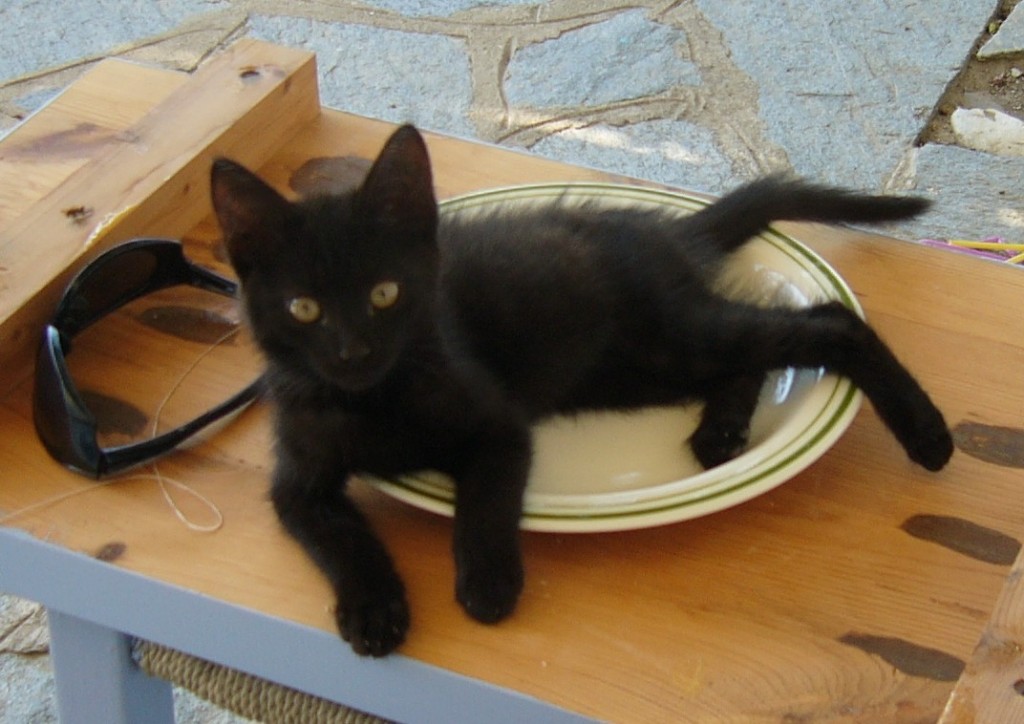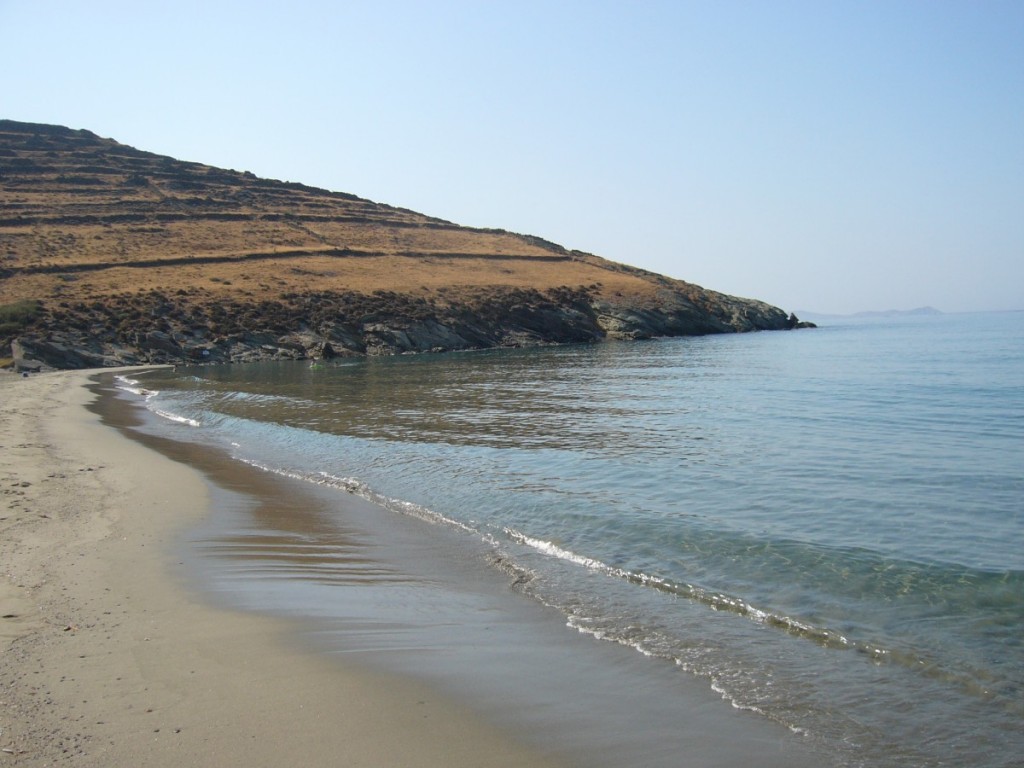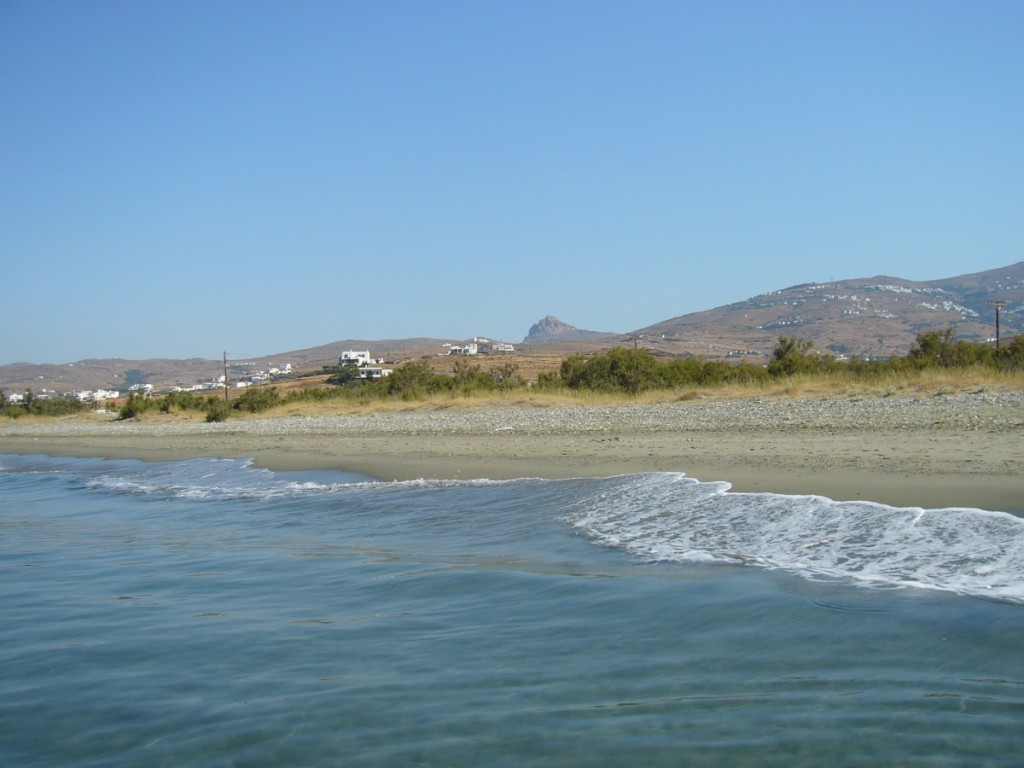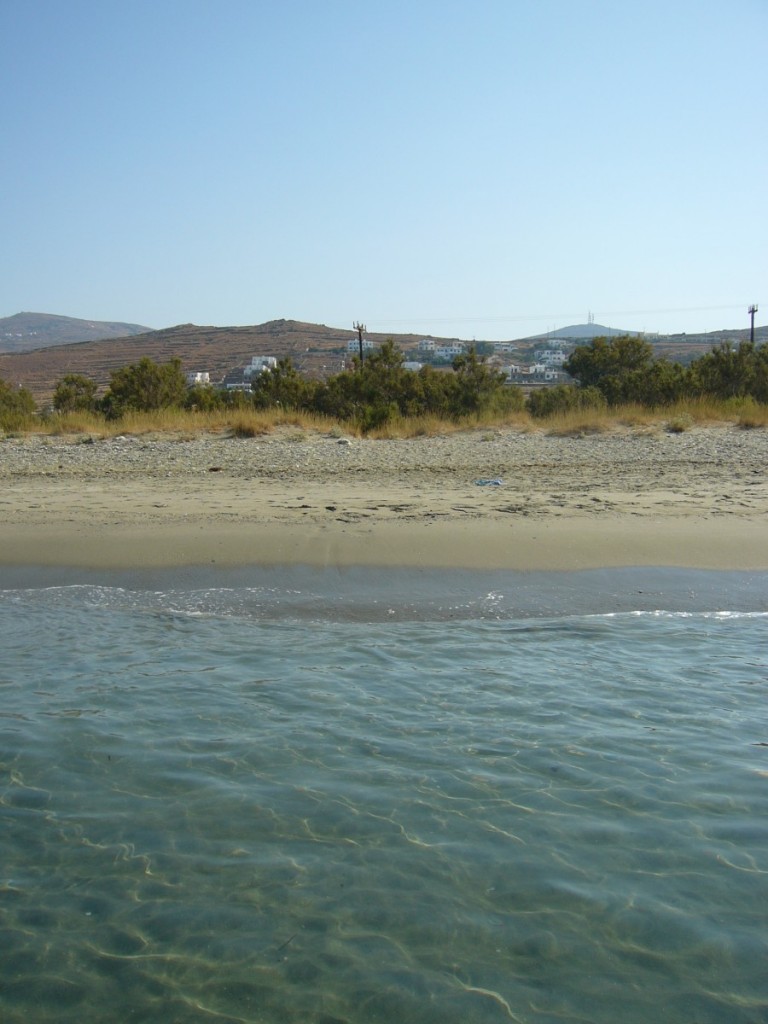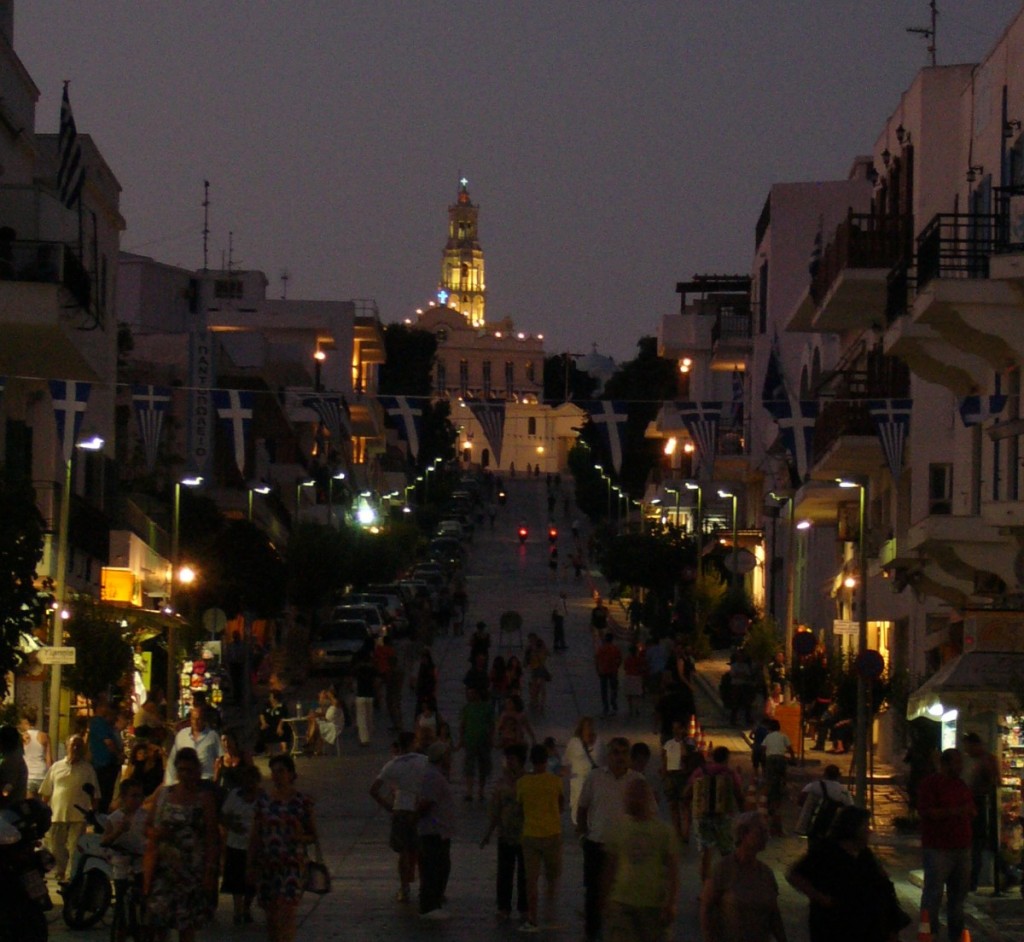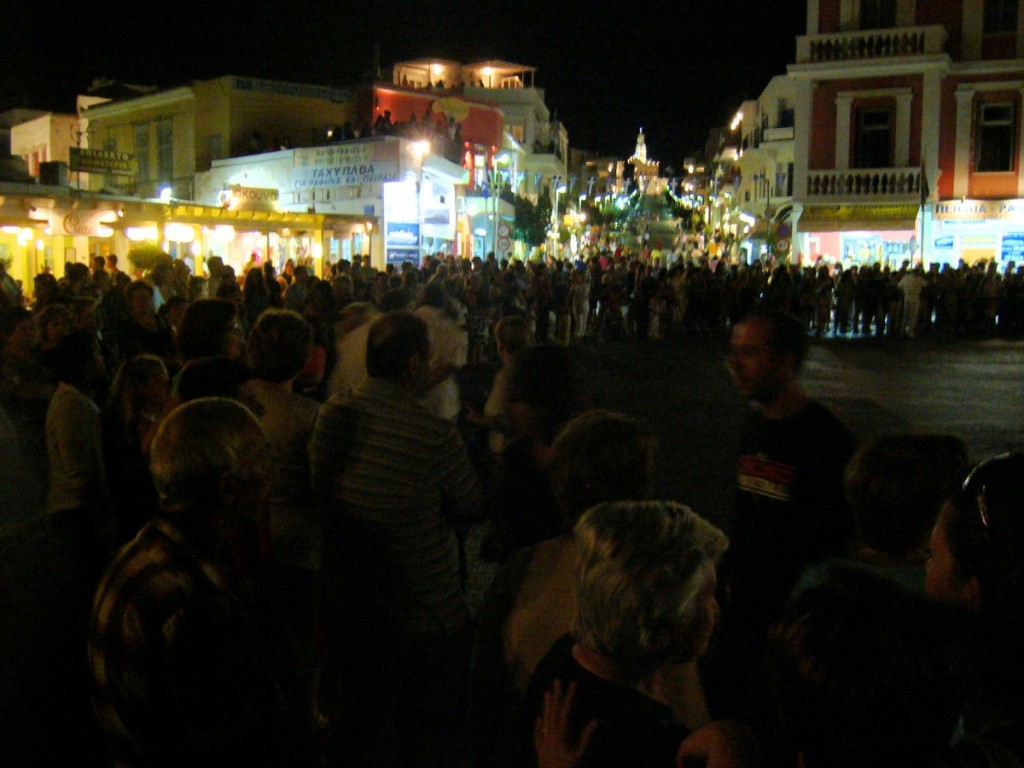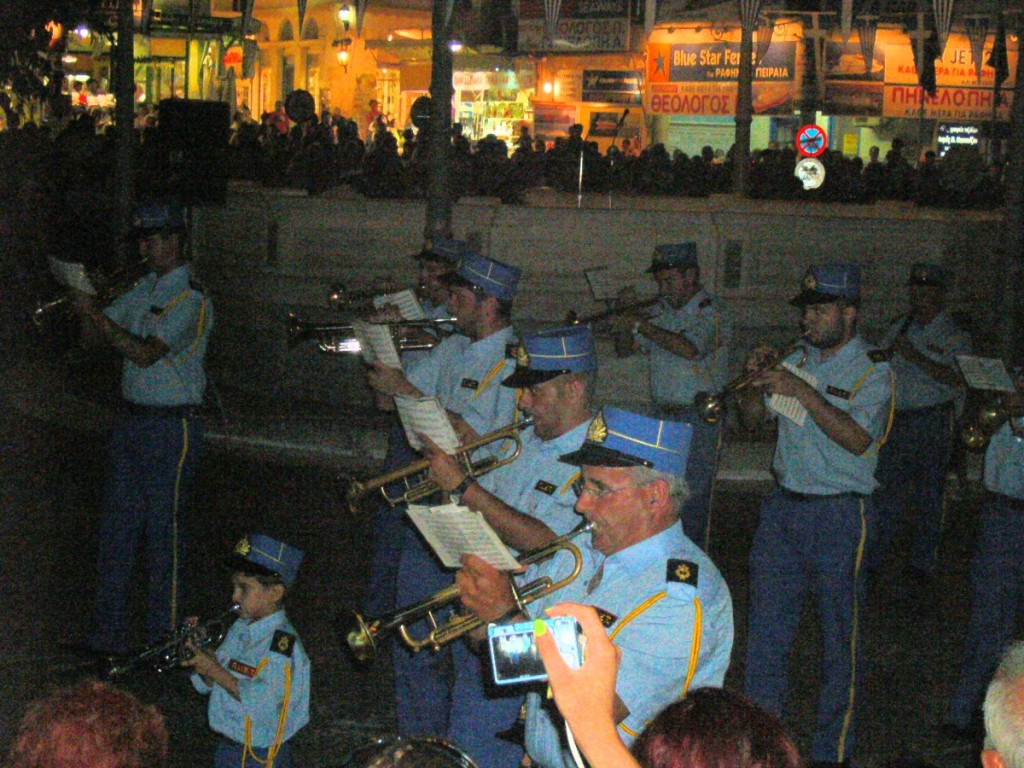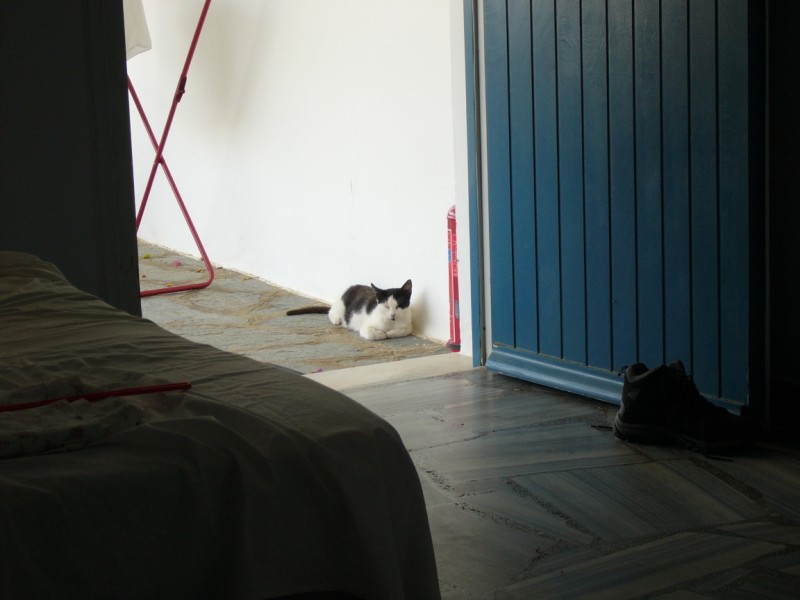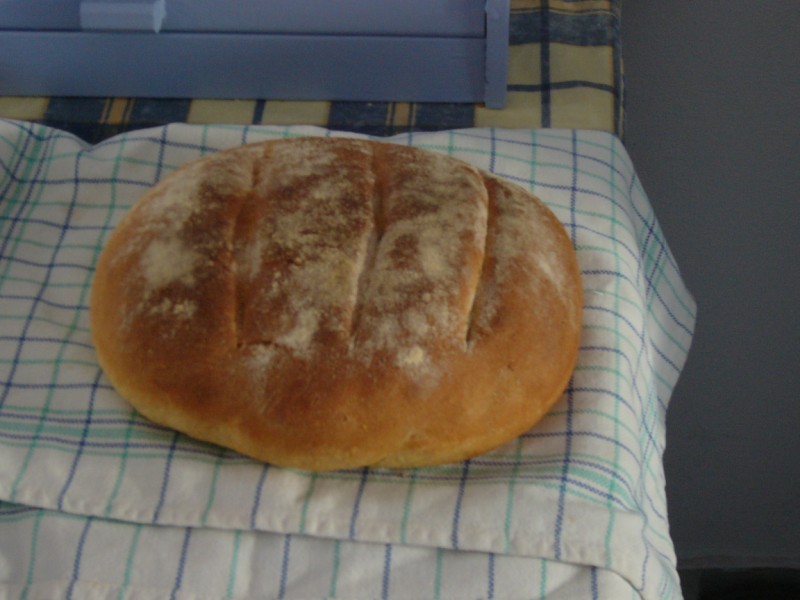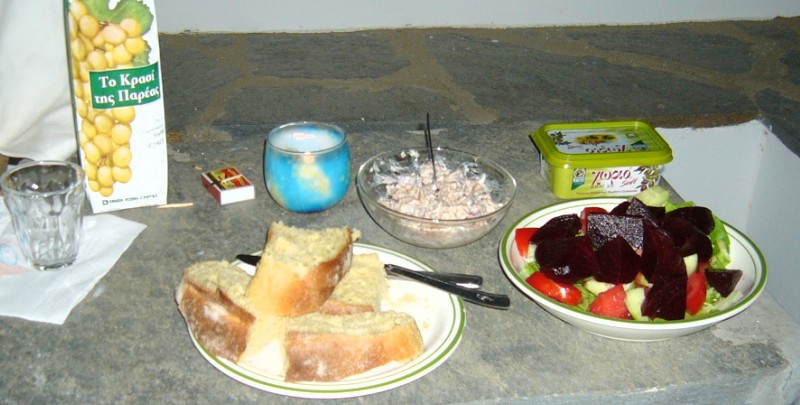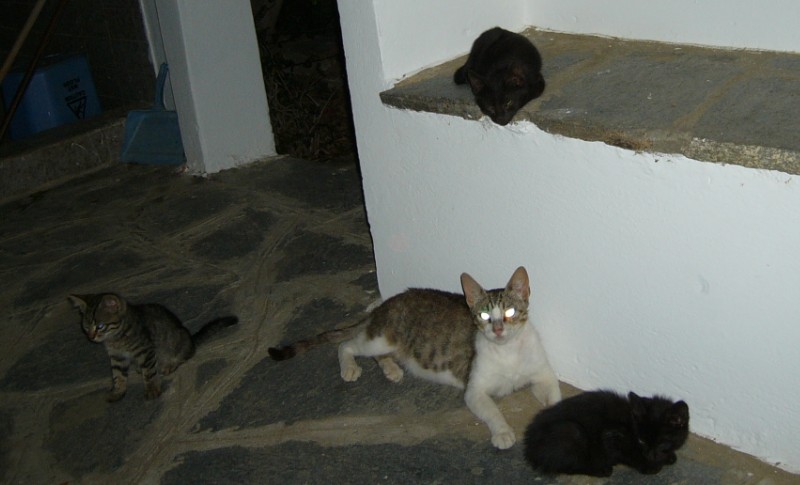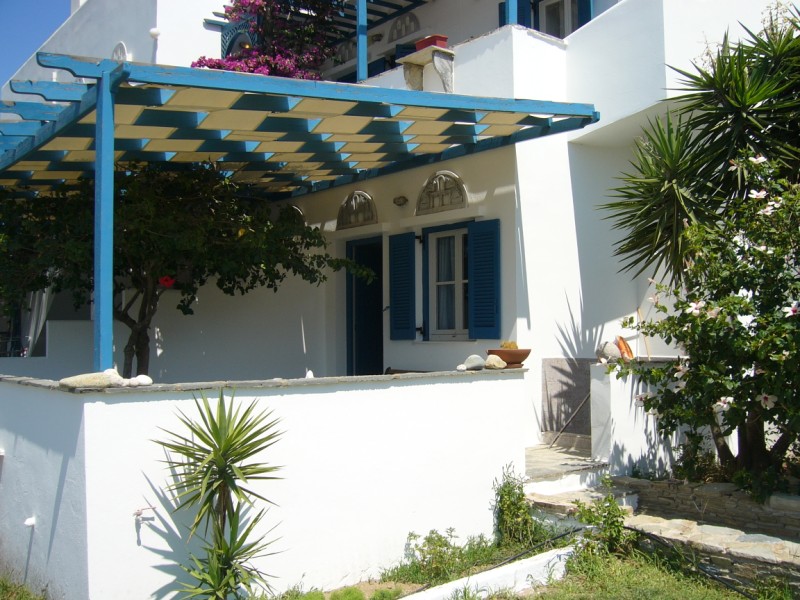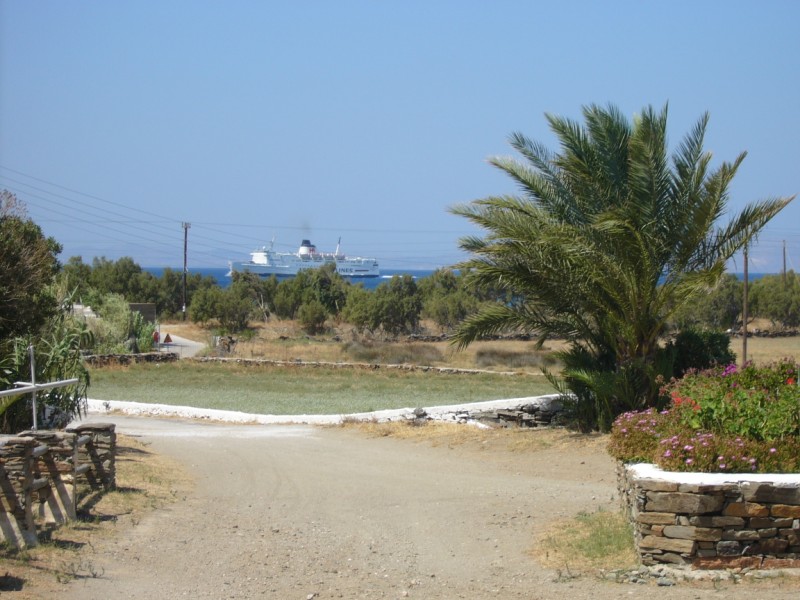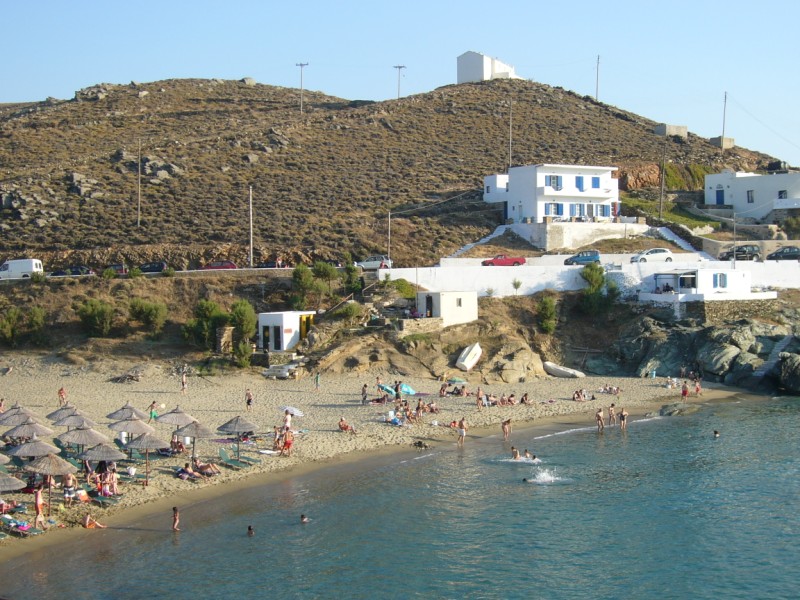I picked Tinos initially as there is very little foreign tourism here but a lot of Greek people, especially from Athens, come here for weekends and holidays.
As a result there is plenty of accommodation and places to eat, etc, and I think very few would dare try and rip off anyone from Athens.
Very few tavernas have boards displaying photographs of their dishes (that’s always been a big negative in my book). I will admit, though, to once picking a taverna here purely based on the fact that the menu in the window offered “aborigine in the oven” (I subsequently gave the place the name road kill cafe and didn’t ever go back in.)
There are some nice beaches on the island and the very picturesque villages in the hills are famed, as are the geometric design decorated white stone dovecotes that are dotted around.

The island’s main attraction is, though, to be found in a big church at the top of the hill that faces you from the harbour. It is a religious icon that is believed to have miraculous powers. The icon got buried when the island was sacked in the 10th century. In the 1840s a nun living in a monastery up in the hills had a vision and was told where to find the icon and it was dug up and a church built on the spot to house it. People of the Orthodox faith make pilgrimage to see the icon and many climb the hill to the church on their knees. (Notice in the picture that there is a row of traffic cones protecting a carpeted crawl lane.) Many gift shops sell small pieces of tin, about the size of playing cards which have images of various body parts embossed (think knees, feet and hearts, that kind of thing) also there are very tall pink paper-wrapped tallow candles – you are supposed to buy one that is as tall as you are to take up to light at the church. The island seems to be a very popular place to get married and have children baptised.
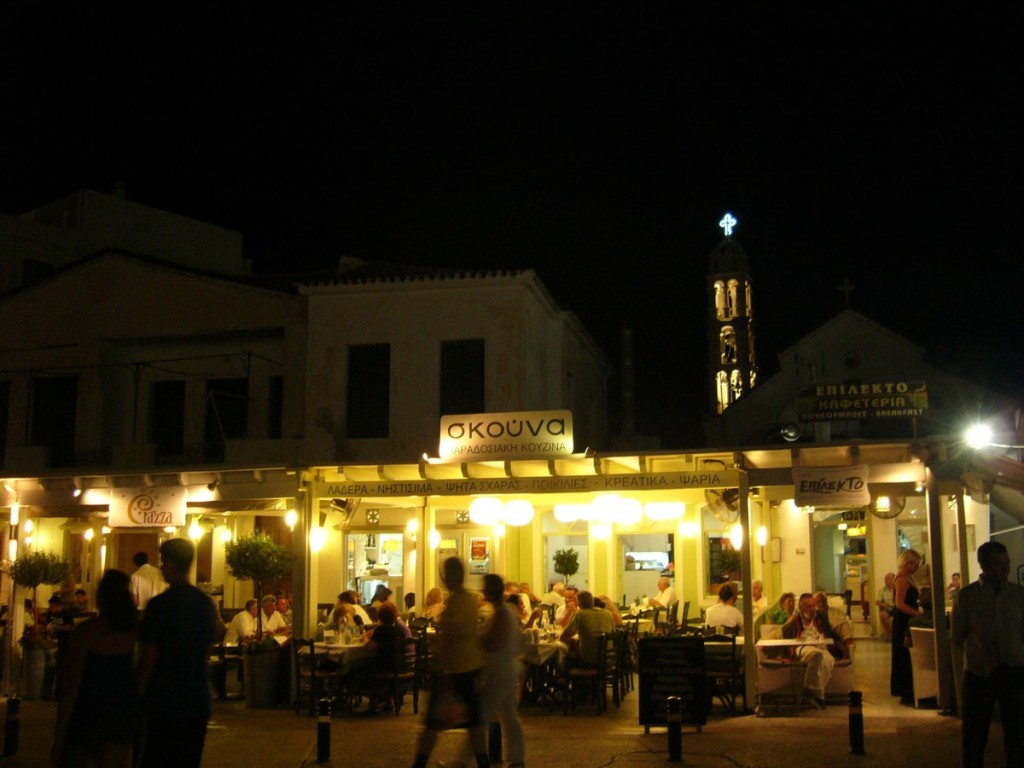 It you want to see the people of Greece do the equivalent of the British in Blackpool come here and watch the late evening “volta” – everyone seems to be out to walk to and from tavernas and ice cream parlour and cafes to places for “loukoumades” (honey-drenched fried doughnuts) or late night gyros wrapped in cones of paper. The harbour road is closed to traffic from 8:30pm to 1am to allow this (oh, and for the children to go completely bonkers on bicycles).
It you want to see the people of Greece do the equivalent of the British in Blackpool come here and watch the late evening “volta” – everyone seems to be out to walk to and from tavernas and ice cream parlour and cafes to places for “loukoumades” (honey-drenched fried doughnuts) or late night gyros wrapped in cones of paper. The harbour road is closed to traffic from 8:30pm to 1am to allow this (oh, and for the children to go completely bonkers on bicycles).

Every ferry that arrives in the harbour is met by a row of very polite accommodation owners holding up their signs for their rooms or hotels and will probably have a minibus to take you to have a look – as far removed as you could get from the bunfight that meets you if you ever get off a ferry at Paros.
Today, 23rd July, is the anniversary of the icon being found. It seems like a big deal – I’m told second only to the saint’s day on 15th August. The icon as been up at the monastery for the day and is being walked back to town in a big procession – should be here about nine, so I’m going to eat early for once and go and take a look.

